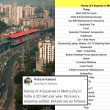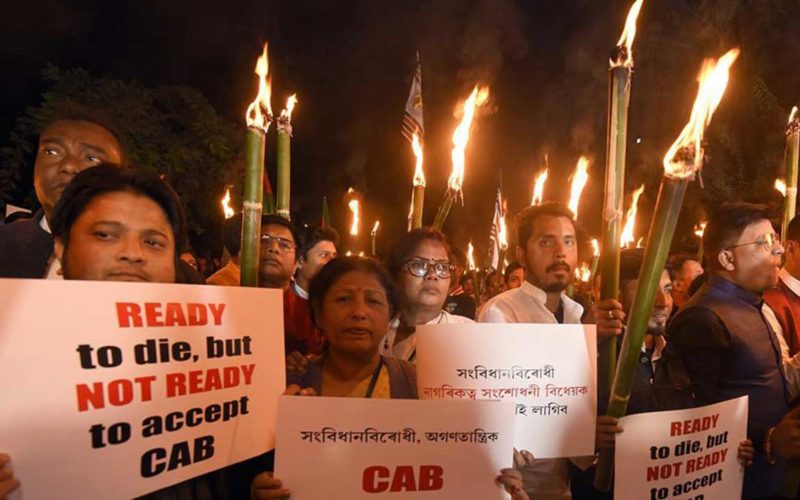- 895shares
- Share
- Tweet
- Facebook Messenger
Assam is burning, as we speak. An indefinite curfew has been imposed on the state and internet connectivity has been stopped. Army has been deployed. The Chief Minister of the state had to take a helicopter yesterday from his house in Guwahati to escape the wrath of the protesters.
You may wonder, what the hell is going on?
Many of my friends (who are not from Assam) have reached out to me in a bid to understand the situation because the noise on social media has managed to successfully suppress the actual facts needed to understand the whole picture.
So here’s a primer on what’s going on, in short.
A little background is necessary to understand the current situation.
What is Assam Accord?
There has been huge influx of illegal Bangladeshi immigrants into Assam from East Pakistan (now Bangladesh) since 1950s. But in 1979, people noticed an unusual rise in voters for the Mangaldoi Lok Sabha bypoll and it wasn’t hard to conclude that it was because of the continuous influx of infiltrators. People were pissed to no ends. And it led to a massive movement in 1979 demanding identification and deportation of illegal Bangladeshi immigrants.
885 Assamese were martyred in a span of 6 years.
People in the prime of their youth gave up six years of their life in dedication to their motherland, Assam.
Finally, the movement ended when Center signed the Assam Accord in 1985. According to the agreed upon Accord, March 25 1971 was decided as the cut-off date. Anyone who came to Assam illegally after this date was to be deported back to Bangladesh.
So you need to understand that the Assam Accord is very close to the hearts of people of Assam.
What is NRC?
The National Registry of Citizens (NRC) was a promise made in the Assam Accord to identify and deport foreigners. But its implementation was sloppy leading to exclusion of indigenous tribes and locals in some cases, while including Bangladeshi infiltrators in others. But that’s a discussion for another day. Next logical question should be:
Now, what will happen to if CAB is implemented & how is NRC related?
If CAB is implemented, it gives instant citizenship to illegal Hindu Bangladeshis and it also negates the NRC. Because the new cut-off date according to CAB is 2014.
Moreover, and most importantly, it makes a mockery out of the Assam Accord. Because now, instead of 1971, the cut-off date has been moved to 2014.
So what happens if cut-off date is moved to 2014?
Massive disruption. Lakhs of Bengali speaking illegal immigrants will immediately get Indian citizenship leading to erosion of ethnic, cultural, linguistic identity of indigenous Assamese people.
It’s important to pause here and understand who these protesters are in Assam.
Assamese people are not communal. They are not protesting against Muslims or Hindus. They don’t discriminate between Hindu or Muslim infiltrators. This is the crux of the whole movement.
Illegal Bangladeshi immigrants are illegal infiltrators. Period.
What’s their religion? Assamese people don’t care, had never cared. They want them all out of their motherland.
So who are these protesters? Who are their leaders?
These are indigenous people of Assam. The protests are not led by any political leader. Students, homemakers, women, men, artistes, singers, filmmakers, young and old, everyone who is an Assamese is burning with rage at this moment. And they’ve come out on the streets to protest.
They have no leader. And they don’t need one.
Okay, but explain to me in detail how will Hindu (or non-Muslim) Bangladeshis threaten the identity of Assamese people?
The North East is so diverse that if it was a country in itself, it would have been the 2nd most diverse country in the world after India. Now these illegal Bangladeshi infiltrators speak Bengali (not indigenous to Assam) and with the influx, they have managed to establish a cultural hegemony within Assam.
E.g. in Barak valley in Assam, Assamese is still not accepted as the state language. This region is dominated by Bengali Hindus and illegal Bangladeshi immigrants.
The Assamese people have still not forgotten how the British administration imposed Bangla as the state language between 1826 and 1872 at the insistence of Bengali-speaking workers from West Bengal.
Assamese people have witnessed in front of their own eyes, how in Tripura, original Tripuris have been outnumbered in their own state. In Tripura today, Bengali-Hindu immigrants dominate politically, linguistically, culturally and have pushed the original tribals to minority.
There are low-key campaigns launched to incite Bangladeshis to overthrow Assamese people in their own land.
And this is just the linguistic part of the problem; the tip of the iceberg, we’re talking about. Culturally, the repercussions created by illegal infiltrators creates a massive imbalance and disrupts Assamese ethnicity, language, culture and tradition. Also, eventually they fear losing representation in the government and losing their voice.
Now that curfew is imposed and internet banned, will it be another Kashmir? Will this agitation be crushed?
“Joi Aai Axom” (Glory to Mother Assam) was an emotional war-cry during the Assam Movement of the 80s. After 34 years since it was last used in such protests, we’re hearing these words for the first time again on the streets of Assam.
Irrespective of the curfew, thousands of Assamese people have flocked the streets of Assam to protest. Gatherings called by eminent singer Zubeen Garg in Latasil area of Assam has seen a massive turnout today.
Thousands of Assam residents defy curfew and assemble in Latasil ground in the heart of #Guwahati city.
These protests on the streets of Assam are like never before.#CitizenshipAmmendmentBill2019 #Assam pic.twitter.com/H5f7OsgVNg
— Siddharth Setia (@ethicalsid) December 12, 2019
Internet is used to organize planned protests. But in Assam, currently, the internet ban is having no impact. We even have seen instances of a single person coming out of his house and walking past his neighbors shouting, “Axomiya hoi jodi, ulai ahok” (If you’re an Assamese, come out and join me”)
And so far, people have. In THOUSANDS!
- 895shares
- Share
- Tweet
- Facebook Messenger




